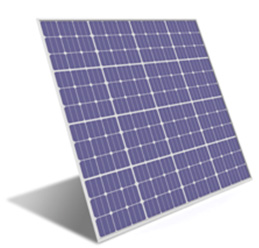Dec 8 2011
SABIC’s Innovative Plastics business today announced a new, high-performance Lexan* EXL copolymer resin that addresses the fast-moving trend toward miniaturization of photovoltaic (PV) connectors and junction boxes.
The enhanced electrical and flame-retardant performance of the new Lexan EXL resin grade enables designers to miniaturize the entire system by creating thin-wall parts, moving conductors closer together and integrating junction box systems – helping to drive down solar energy costs and increase efficiency. New Lexan EXL resin helps customers strengthen their competitive footing by contributing significantly to the benefits of PV systems and further accelerating the move to solar energy.
 SABIC’s New High-Performance Lexan* EXL Resin is Used in Photovoltaic Connectors and Junction Boxes.
SABIC’s New High-Performance Lexan* EXL Resin is Used in Photovoltaic Connectors and Junction Boxes.
The PV market is one of the most dynamic global sectors, with compounded annual growth rates above 20 percent1 and significant attention as a viable and growing mainstream alternative energy source. “SABIC provides specialized materials that enable our photovoltaic customers to improve the value of solar energy as a cost-effective environmental solution,” said Andrew Kodis, Solar marketing director, Innovative Plastics. “Our focus on the photovoltaic market reflects SABIC’s active support for environmental trends such as alternative energy, which depend upon technological breakthroughs to make them economically feasible. Our broad portfolio of materials contributes to sustainability in many different ways, particularly by enabling new design approaches.”
Several factors are now converging to drive miniaturization in the photovoltaic industry, including efficiency advancements and increased home use of solar panels, calling for flatter, unobtrusive and sometimes integrated designs. “As leaders in the development of polycarbonate for nearly 60 years, we are able to leverage our deep knowledge and industry expertise to foster innovations in solar that help our customers achieve their sustainability objectives,” Kodis said.
Industry-leading Electrical and Flame Retardant Performance
The new Lexan EXL 9330S grade surpasses traditional materials in its electrical performance as demonstrated by a comparative tracking index (CTI) Underwriter’s Laboratory (UL) standard with PLC-2 rating. Compliance with this tough standard means Lexan EXL 9330S copolymer resists arcing in the presence of moisture and salts and, therefore, can be used in parts that are placed closer together (4 mm vs. 12 mm under Class 3). The flame-retardant material also complies with the UL94 V0 standard at 0.8 mm, allowing thinner-wall parts to be designed.
In addition, Lexan EXL 9330S copolymer provides exceptional low- and high-temperature impact resistance (from -40 C to 70 C) and corrosion resistance for good long-term performance and weatherability in a range of demanding outdoor environments.
Potential for System Cost Reduction
With its processing advantages of easy flow for cost-effective thin-wall designs and high throughput, plus easy release from the mold, Lexan EXL 9330S copolymer can reduce the total injection molding cycle time by up to 40 percent.
Pottants and sealants are used in the PV industry to attach the junction boxes and connectors to the solar panel. Alcohol based sealants and pottants are typically compatible with Lexan EXL materials and are recommended for use with the same2.
Expanding SABIC’s PV Portfolio
This new grade is part of SABIC’s portfolio of high-performance, versatile materials for the PV industry. They include Noryl* resin, which provides low density, dimensional stability over a wide temperature range (-40 C to 140 C), low warpage, excellent long-term weathering, damp heat performance with exceptional stability of up to 2,000 hours, and outstanding electrical and thermal performance. These properties make it suitable for use in PV junction boxes. Noryl resin also meets the industry’s critical need for a long-lasting, outdoor-resistant material. Internal tests show that glass-filled and unfilled Noryl resins can withstand 12,000 hours of ultraviolet exposure. In addition, existing Lexan EXL 9330 and Lexan EXL 9330P materials provide low temperature impact and other benefits similar to Lexan EXL 9330S copolymer. While Lexan EXL 9330 and Lexan EXL 9330P materials are used in designs calling for CTI PLC-3 rated materials, the newly introduced Lexan EXL 9330S copolymer will suit designs that demand CTI PLC-2 properties.
Ultem* resins and LNP* specialty compounds are also being used for internal junction box parts and special connectors. Temperatures in these applications may go up to 180 C or beyond and dimensional stability requirements are even more stringent. Commercial grades of Ultem resin and LNP compounds have been implemented successfully in PV applications from key industry players.
SABIC offers its PV customers a combination of high-performance resin technology and application design and development support. The company has a history of successfully translating metal to plastic and work closely with customers to help validate the use of its materials with extensive practical testing. SABIC also works closely with regulatory bodies to help ensure that the economical use of the company’s resin technology will meet the performance requirements of PV systems.